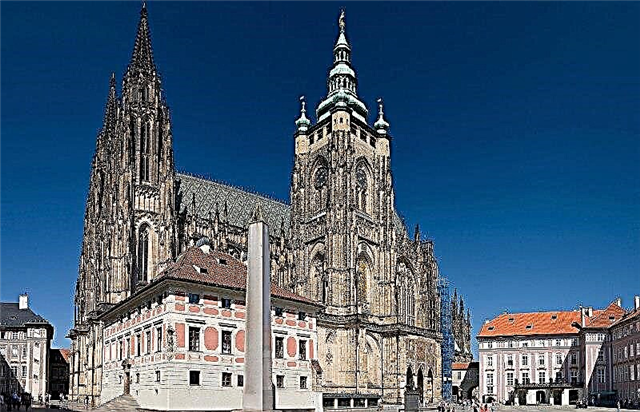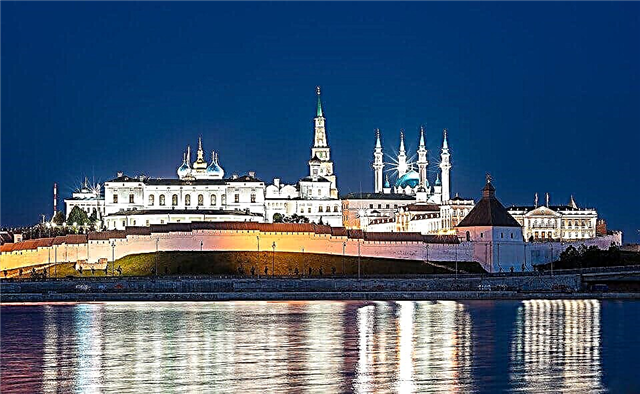Address: Italy, Rome, Capitoline Museums
Height: 75 cm
Dated: V century BC, according to other sources XI-XIII century AD. e.
Content:
Short description
The statue of a she-wolf feeding two babies Romulus and Remus with her milk is perhaps by far the most famous sculpture in the world, whose history is hidden behind a dense veil of secrecy. The Capitoline wolf left after her research by various scientists more questions than answers.

At the moment, any visitor to Rome can see the statue, cast in bronze, in the Capitoline Museum, which is located on the famous Capitoline Square in a palace called the Palazzo dei Conservatory. The height of the she-wolf is 75 centimeters and this suggests that an unknown sculptor made it almost life-size.
Romulus and Remus, as is known from legend, became the founders of the "eternal city". It is they who feed on the milk of the Capitoline she-wolf and are the children of the fertility god Mars. God Mars initially gave people a harvest and, being angry, destroyed it. Only centuries later, Mars began to be considered the god of war. For many who are not familiar with history, it will probably be interesting to know that the first spring month of March is named after him. Vestal Rhea Sylvia, who under pressure from her brother, her father, took a vow of celibacy, literally four years after the ceremony, gave birth to two twins. Amulius did not want to put up with the birth of another heir to the throne and ordered Romulus and Remus to be thrown into the river. These two twins were washed ashore, where they were nursed by the Capitoline she-wolf. If you delve into this legend in more detail, you can come to a dead end, because the versions about the birth of Romulus and Remus, however, like the statue of the Capitoline wolf itself, differ greatly.

The history of the statue of the Capitoline wolf
Already speaking about the time when a she-wolf was created, feeding two twins, it is rather difficult to come to a definite conclusion. The style of the statue itself leads scientists to believe that The Capitoline she-wolf was cast from bronze as early as the 5th century BC (the date is controversial, according to other sources, the 11th-13th century AD) by the Etruscans... In ancient times, the statue was transported to Rome and signified the inextricable link between the ancient Romans, Etruscans and Sabines. As mentioned above, the statue, which thousands of tourists come to see every day, is exhibited on Capitol Hill, and almost any guide will assure his group that it is currently in the same place where the Etruscans installed it.
This statement sounds rather strange, if only because the Etruscans could not independently go to Rome and install the statue where they would like it. According to some scholars, there is an answer to one very important question: who, if you put the legend aside, founded Rome? Etruscans. Yes, the city that became "eternal" in the future, the capital of the greatest Roman Empire, was founded by the Etruscans. This version is confirmed by the finds of numerous archaeological expeditions, which managed to find on the Palatine Hill a lot of evidence that the Etruscans lived on the territory of modern Rome. What, then, does the Capitoline wolf have to do with it, and what does it symbolize? And how was it possible to cast a solid sculpture from bronze in the 5th century BC? The technology by which you can make, albeit a small she-wolf, did not exist at that time. If the Capitoline she-wolf had been cast from bronze in parts, all questions would have disappeared by themselves, but this is not the case. Therefore, this version was refuted in 2006 by Anna Maria Karruba, who was engaged not only in research, but also in the restoration of the she-wolf. She proved that the she-wolf could not have been cast earlier than the 8th century of our (!) Era.

Capitoline she-wolf: versions of modern scientists
As you can see, there are really more questions than answers. Based on the works of the Roman chroniclers, one can only say for sure: the statue of a she-wolf previously stood in the Lateran Palace. In the place that the monk Benedict calls the judgment seat... He mentions in his writings about the courts and executions near the "mother of Rome" - as he apparently called the Capitoline she-wolf. Examining all the documents, you can see that they only talk about a she-wolf, which, by the way, does not much resemble an aggressive animal, it looks more like an ordinary dog. Not a single mention of Romulus and Remus sucking her milk ... It turns out that two babies were made already in the 15th century AD and were added to the sculpture. Even the name of the sculptor is known, who made the twins in a completely different style: according to documents that have survived to this day, his name was Antonio del Pollaiolo. Such a beautiful legend about Romulus and Remus, the further you delve into history, literally collapses before our eyes. Not a single scientist can argue with this anymore, all the results of the studies of twins indicate that they were cast in the 15th century and not a century earlier. Most likely, it was then that the Capitoline she-wolf was cast. True, the phrase “most likely” will remain the main thing in any work of a historian, archaeologist or sculptor.
Already at the end of November 2007, the grotto was explored, which was named the temple of the she-wolf. Archaeologists, alas, did not manage to get into it, but the photos taken by a camera fixed on a special probe confirm that it was in this grotto that the children of Mars, Romulus and Remus, were worshiped. Their wet nurse was also revered there - an evil predator who took pity on the unfortunate twins.

The lupercale temple is an oval grotto with walls decorated with marble and already partially destroyed mosaics. The temple itself, where the ancient Romans, who lived before our era, worshiped the she-wolf and the babies who founded Rome, was made in the shape of an oval. Alas, not a single word from historians and archaeologists why this particular temple was dedicated to a she-wolf, Romulus and Remus did not sound. The main thing, according to the Italian minister, was that in 2007 it was proved that the myth has solid ground, and the arguments of Anna Maria Karruba have nothing to do with reality. Still, the legend of Romulus and Remus, born of the god Mars, is a postulate on which the whole history of Rome is based. To destroy it means to prove that the great Rome, which was founded by the demigods, is not so great.
“The myth has finally not only received another confirmation, it has become a reality,” said the Italian minister in November 2007 in a fiery speech. Immediately after the opening of the Lupercale temple, some linguists tried to put forward another version, which did not contradict the fact that the brothers Romulus and Remus founded Rome. They just tried to prove that the word "magnifying glass" can be interpreted not only as a she-wolf, but also as a dissolute woman who gave her body for the delight of anyone she met. Raised Romulus and Remus the Capitoline she-wolf or hetaira is not so important, the main thing is that the brothers existed and founded Rome.

In this material, almost all attention is paid to history, which, alas, until now, so that the Italian minister does not talk about it, the majority considers a beautiful and vivid legend. How could it be otherwise? After all, it will probably hardly be possible to prove in what year and by whom exactly the Capitoline she-wolf was cast.
Capitoline wolf and babies
All paths-roads, according to the famous saying, lead to Rome. This city is visited annually by millions of tourists, most of whom, undoubtedly, want to see a she-wolf feeding Romulus and Remus with her milk. In fairness, it should be said that this sculpture is just a symbol and does not cause such delight among the guests of the Italian capital as the Colosseum, Circus Maximus or the Mouth of Truth. True, many want to look at the sculpture and experience the feeling that you have come into contact with something unearthly, ancient and connecting mankind with pagan gods.That is why long queues are often lined up to the sculpture, although its exact copies can be viewed in detail in Brazil, the United States of America, Romania, Spain and even in Tajikistan. According to most sculptors, the Capitoline she-wolf is of interest only to historians who are still puzzling over who founded Rome after all.

For a common man in the street, a she-wolf is just an interesting attraction, against the background of which it is simply necessary to take a couple of pictures for memory.










